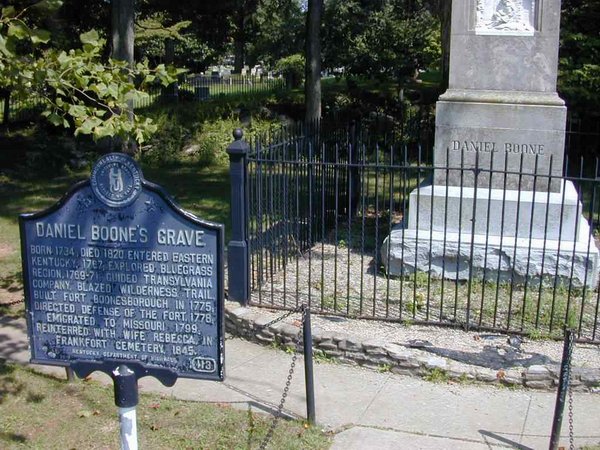 |
| LT on the Ohio River |
Born of a Mahican mother and a Miami father,
Michikinikwa (
Me-she-kin-no-quah) or
Little Turtle was born in Indiana around
1752. Not much is known of his early life until he fought against the Americans during Revolutionary War as a British ally. He could never be the principal Miami Chief because of his lineage but he led the Miami to several victories during that war and became the
War Chief of the Miami. After the American win over the British in the Revolutionary War the Miami continued resisting American settlement in the Ohio Valley and Little Turtle emerged as one of their primary leaders.
So what's with the name anyway? "LittleTurtle" does not sound like the name of a fierce warrior and brilliant military strategist. Little Turtle was not a small man either. In fact, he was six feet tall by all accounts. The name, per historical author J.P. Dunn, comes from a literal translation of his Miami name by English interpreters. His name in Miami, Michikinikwa, was
the word for the painted terrapin which is a small colorful turtle. The turtle figured prominently in Algonquin symbolism and generally represented the Earth. The English interpreters had no word for this particular type of turtle so they just started referring to him as Little Turtle. You have to admit that Michikinikwa is a bit of a mouthful to say, especially for a bunch of white people who likely didn't finish 8th grade.
 |
| LT on a piano |
In the years following the Revolutionary War, America was intent on expanding its borders into this ceded territory per the terms of
Treaty of Paris with the British. The problem was, people lived there. Generally, Indians then allowed whites to hunt or occupy some of this land. But now Americans were building forts and permanent towns. Little Turtle and other leaders saw the permanent settlement as encroachment since there was no Indian treaty with the Americans to occupy this land. In fact, the series of battles we know as the
Northwest Indian Wars from 1785-1795 was originally called
Little Turtle's War. It was during this time period that Little Turtle led his own confederation of Miami, Shawnee, and Delaware to
major wins over General Harmar in 1790 and
General St Clair in 1791. These catastrophic American losses emboldened the Indians in the Ohio Valley and influenced a young
Tecumseh in his more famous confederation during the early 19th century.
This boosted morale was short-lived and Little Turtle knew that the odds were against his people as the wave of American settlers increased and direct British support waned. Outright extinction of his people was a real possibility.
He grudgingly negotiated peace with the Americans. Some of the
other tribes led by the Shawnee Blue Jacket went on to fight and
lose at
Fallen Timbers against General Wayne. This battle resulted in the confederation of Indians signing the
Treaty of Greenville in 1795 which gave most of Ohio to the Americans.
The vanquished Little Turtle promised to remain peaceful and encouraged cooperation with the Americans and convinced some of the older war-weary tribal Chiefs to join him. However, this was far from over and a rising new star named
Tecumseh was making waves. Ironically
it was Little Turtle who kept most of the Miami from joining Tecumseh's confederation which infuriated the new young leader.
Tecumseh and his brother Tenskwatawa were building their own support and continued resistance. In fact, they were waging a fundamentalist religious war against these older placated leaders accusing them of witchcraft and holding executions.
Chief Leatherlips of the Wyandot was a victim of one of these very witch hunts. There were many schisms within the various Nations and tribes at this time who were forced to choose sides.
 |
| LT in a painting |
Little Turtle became a celebrity with European-Americans in his later years and traveled East where he
met Presidents Washington, Jefferson, and Adams. It was his
1808 meeting with Jefferson, an expert in agriculture himself, where he was encouraged to introduce Western farming methods to his people. The famous lithograph of Little Turtle and only known likeness of him is based upon a lost portrait by Gilbert Stuart, at the request of President George Washington. The original was destroyed when the British burned Washington, D.C. in 1814 during the War of 1812.
On the surface, these new developments sounded promising. However, Native Americans could change their religion, way of life and their style of clothing but they could not change their skin color or distinct features and were still Indian savages as far as most Americans were concerned. Little Turtle signed several more land treaties over these years that proved to be unpopular with the Miami and the neutrality of the Miami tribe still did not protect his tribespeople from American attacks. As a result of this
his respect within his tribe diminished and in 1809 lost his status as war chief while Miami leadership went to others.
 |
| early 19th-century lithograph of LT |
Little Turtle died on July 14th day 1812 near his place of birth in present-day Fort Wayne, Indiana. He was staying at the home of his son-in-law William Wells, his daughter's white husband. Little Turtle was given full American military honors at his funeral.
His grave location was neglected and lost to time until a home builder in the early 20th century discovered a bunch of skeletons along with some artifacts. Among the recovered artifacts was the very sword that was presented to Little Turtle by George Washington which is now in a museum.





















